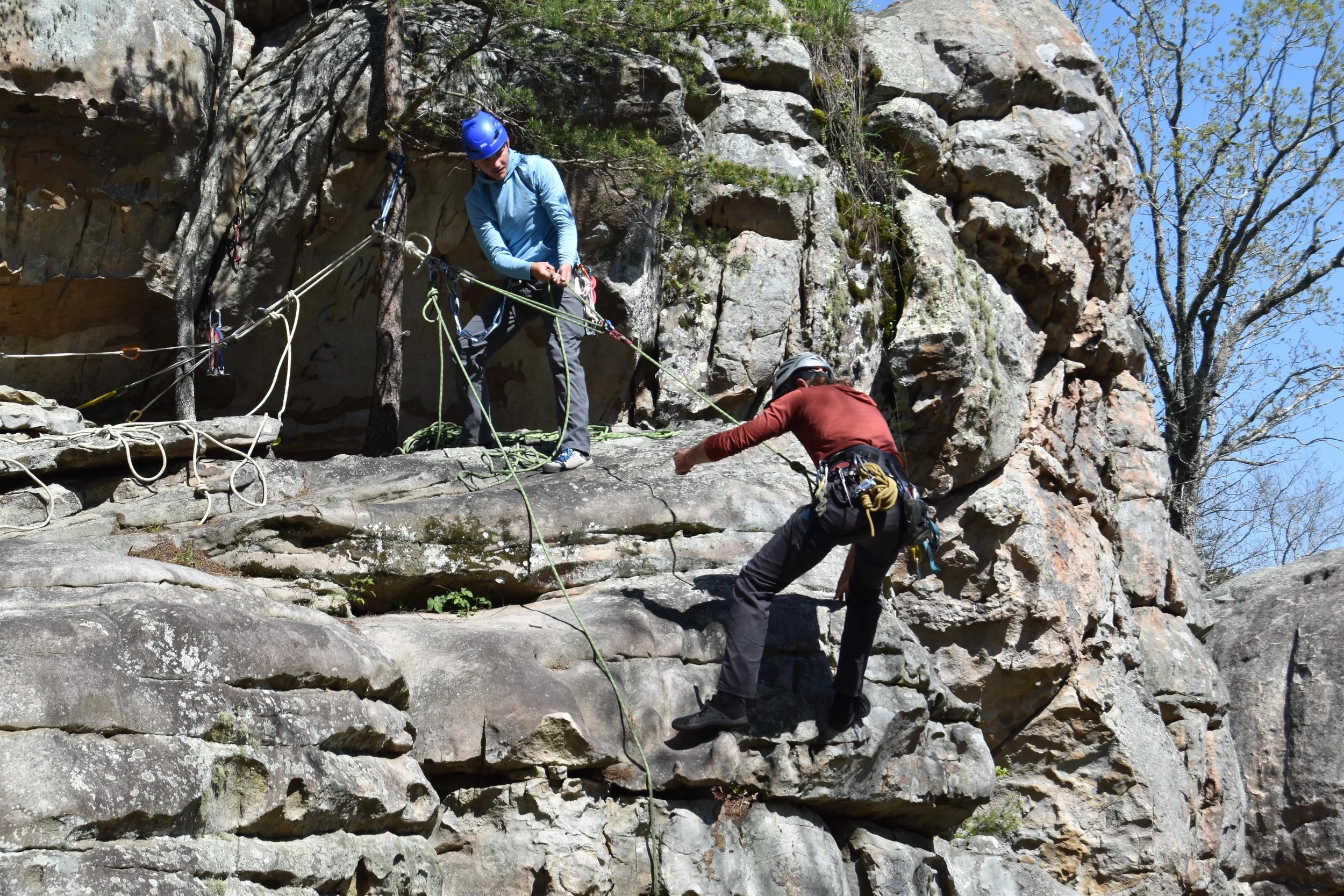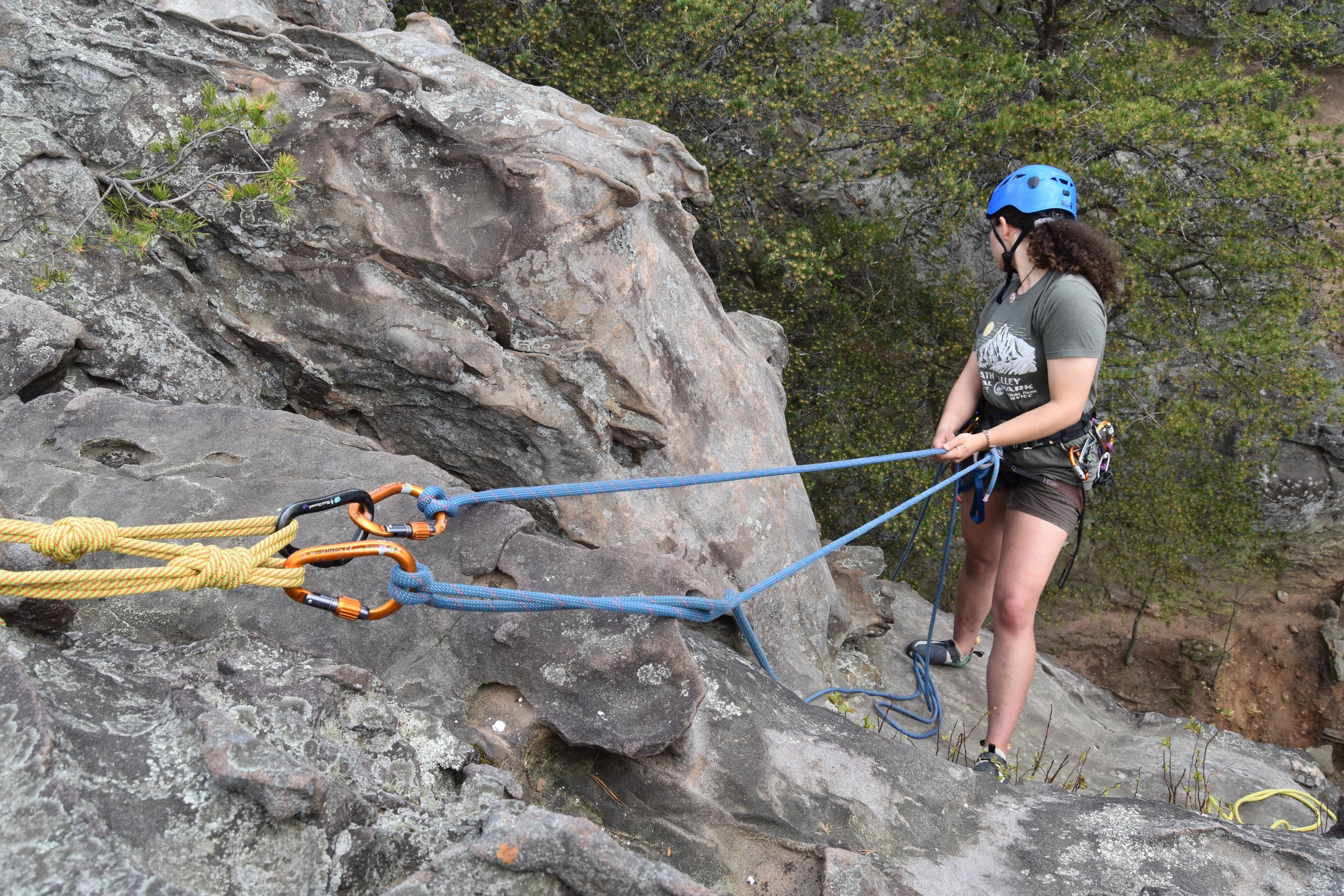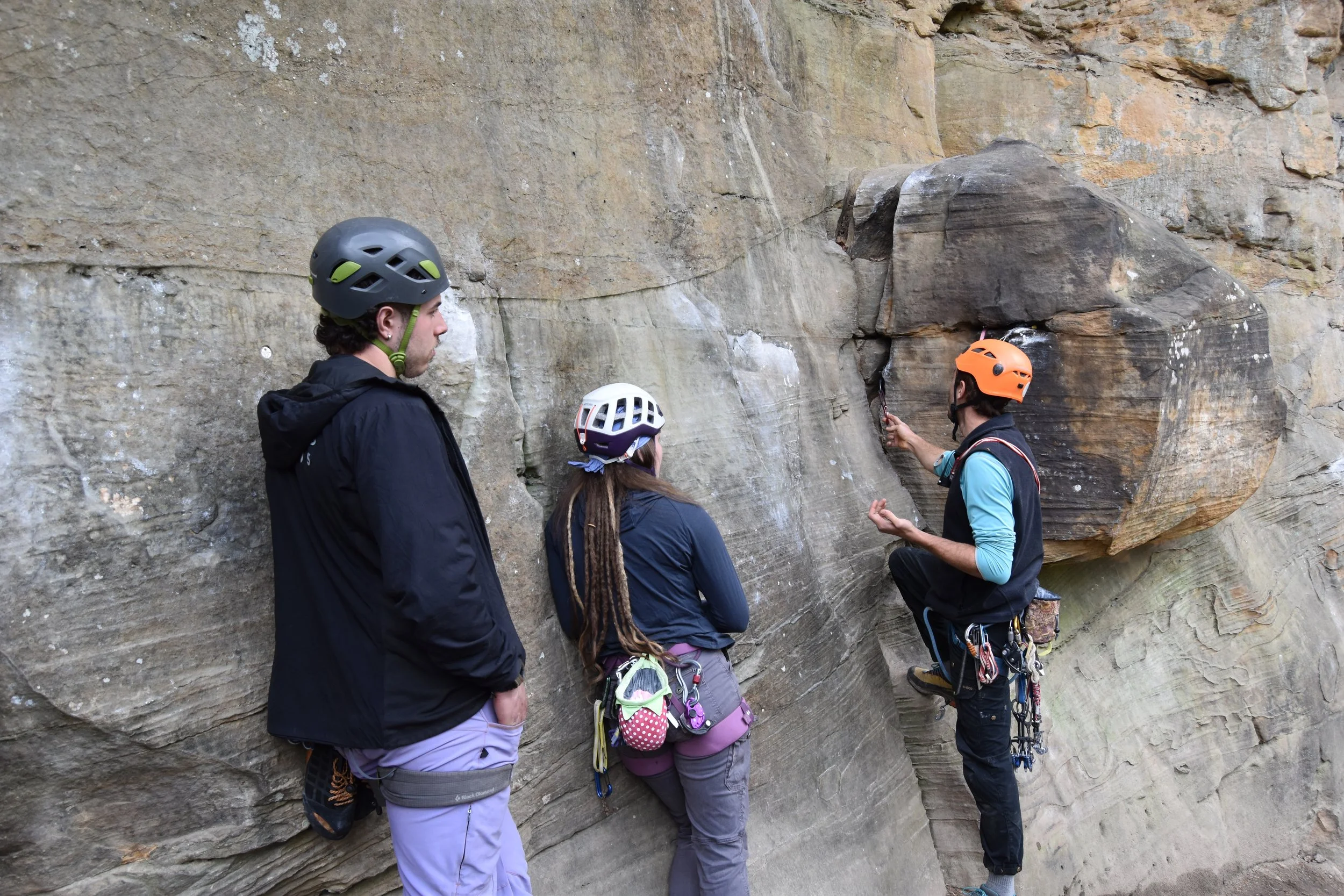AMGA Single Pitch Instructor Certification: The Ultimate Insiders Guide.
Single Pitch Instructor students practicing a new technical skill.
If you're looking to become a climbing instructor—or you just want to get serious about your technical skills in a group setting—you’ve probably heard of the American Mountain Guide Association Single Pitch Instructor (SPI) program. It’s often seen as the gateway credential for climbers who want to work professionally in a single pitch environment, but what exactly does it do for you?
Let’s break it down.
Who It's For
The SPI program is designed for two types of people:
Aspiring Climbing Instructors who want to work in single pitch environments (think guided top-rope and sport climbing days).
Recreational Climbers who want the formal training and technical systems used by professionals, without necessarily planning to guide or instruct.
If you fall into either of those categories, the SPI is worth your time.
What It Actually Prepares You For
The SPI course does a solid job of teaching the technical systems that professional instructors use in a single pitch group setting. That includes things like:
Anchoring systems
Site management
Belay and rappel setups
Risk management
Efficiency in transitioning and managing groups at the crag
It also gives you a clear baseline of expectations for instructor-level climbing: how you move, how you solve problems, and how you carry yourself with professionalism and confidence.
If you want to understand what it looks like to run a group top-roping day safely and cleanly, this course sets that foundation.
A certified Single Pitch Instructor using a munter hitch with great effect.
What It Doesn’t Cover
That said, it’s important to be realistic about what the SPI doesn’t cover—because there are some big gaps.
You’re Not Teaching Real Students: While you’ll “teach” during the course, your “students” are just your peers—other climbers at a similar level. So you’re not getting experience teaching someone who’s never tied a figure-eight before or who’s nervous 20 feet off the ground. That kind of experience only comes from actual work or mentorship.
You’re Not Learning How to Run a Guiding Business: The SPI doesn’t touch on business operations. Marketing, insurance, permits, pricing, customer service—none of that is covered. So if your goal is to work independently, know that the SPI is just one (very technical) piece of the puzzle.
It’s Not a Climbing School: The SPI isn’t about teaching you how to climb; it assumes you’re already a solid, well-rounded climber—especially when it comes to traditional climbing. You are expected to show up with experience leading trad, building anchors, and moving confidently on the rock.
The official minimum requirement is 15 traditional leads at the 5.6 level or higher. But let’s be real: that’s the bare minimum. If you come in with only that level of experience, you’ll likely spend the course playing catch-up on skills that should already be second nature.
To truly get the most out of the SPI course, you should be a proficient, confident trad leader with a wide range of experience across different types of rock, placements, and anchor scenarios. The more mileage you have placing gear and managing systems on real climbs, the more digestible and useful the course content will be.
If you’re still in the early stages of learning how to lead trad, it’s worth spending more time developing those skills before taking the course. That way, the SPI becomes about refining systems and learning to manage groups—not struggling to understand basic concepts under pressure.
Teaching traditional climbing protection.
A Bit of Background: What the SPI Was Originally Designed For
It’s also worth understanding the original intent behind the SPI program.
The SPI was never designed to be a standalone credential for running an independent guiding operation. Its original purpose was to prepare instructors to work under the supervision of higher-level guides, like AMGA Rock Instructors, Multi-pitch Instructors or full AMGA Certified Rock Guides.
That context matters—especially if you’re hoping to make guiding your full-time profession. The SPI is a step, not the summit.
A Personal Take
I started my own professional journey in the outdoor industry by taking the SPI course—but that wasn’t the beginning of my climbing journey. By the time I took the SPI, I had already been climbing for about 10 years, with plenty of time logged on rock, rope, and gear. I was comfortably leading trad routes up to 5.10 and had built a solid foundation of personal experience.
Even with that background, the SPI was valuable. It wasn’t about learning how to climb—I already knew how to do that. Instead, it gave me a structured, professional framework for how to run climbing days for groups, manage risk efficiently, and hold myself to a higher standard when it came to communication and systems.
But I knew early on that I wanted to go further.
Within six months of earning my SPI certification, I went on to take the AMGA Rock Guide Course. That opened the door to guiding in more complex, multi-pitch terrain and pushed me even deeper into the technical and professional side of climbing. Looking back, the SPI was a great entry point—but it was just that: an entry.
Being a climbing guide is one of the best things I’ve ever done with my life.
The Bottom Line
The AMGA SPI program is a great fit if you want to:
Start a career as a climbing instructor in a single pitch environment
Learn the professional systems used to run safe, efficient group days at the crag
Build a foundation for future guiding or instructor certifications
But it’s not a one-stop-shop. It doesn’t make you a great teacher, it doesn’t teach you how to run a business, and it doesn’t replace real-world experience. Think of it as your technical and professional starting point—a valuable piece of the puzzle, but not the whole picture.
If you’re considering the SPI, go in with your eyes open—and your stoke high. It’s a meaningful step, especially when combined with mentorship, hands-on experience, and a commitment to growing beyond the syllabus.




